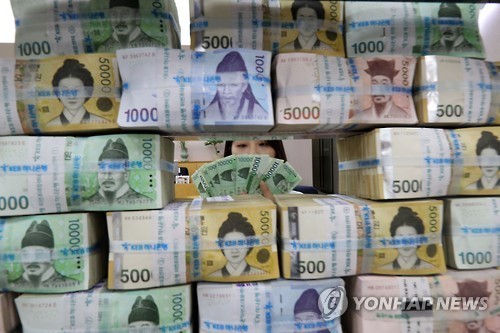Demand deposits at South Korea's five major commercial banks have exceeded 300 trillion won ($257 billion), as a growing number of people are waiting for investment opportunities, data showed Tuesday.
Demand deposits at Shinhan, KB Kookmin, Woori, KEB Hana and NH banks totaled 327.3 trillion won at the end of last year, an increase of 41.7 trillion won from a year earlier.
 |
This undated file photo is of a pile of bank notes. (Yonhap) |
KB Kookmin posted the largest growth of 11 trillion won, followed by Shinhan with 9.4 trillion won and NH with 8.4 trillion won.
If money market deposit accounts are included, the volume soars to 416.5 trillion won.
Demand deposits, a measure of money supply, are funds held in accounts from which deposited funds can be withdrawn at any time without any prior notice.
MMDAs are a savings account sharing some of the characteristics of a money market fund invested in short-term securities.
Bank officials attributed the increase of demand deposits here to a lack of attractive investment vehicles.
South Korea's stock market has been stuck in a right range for years and the real estate sector also shows indications of the doldrums.
Uncertainties about the new US administration's policy and the speed of interest rate hikes linger.
The growth of demand deposits is a positive trend for banks, meaning more profits from loan-deposit margin.
The average interest rate of demand deposits stands at 0.1 percent a year, far lower than the 1.5 percent of ordinary deposits.
"It's a very encouraging phenomenon for banks, given a far greater loan-deposit margin than savings deposits and installment savings," a bank official said. (Yonhap)







![[Today’s K-pop] Blackpink’s Jennie, Lisa invited to Coachella as solo acts](http://res.heraldm.com/phpwas/restmb_idxmake.php?idx=644&simg=/content/image/2024/11/21/20241121050099_0.jpg)
